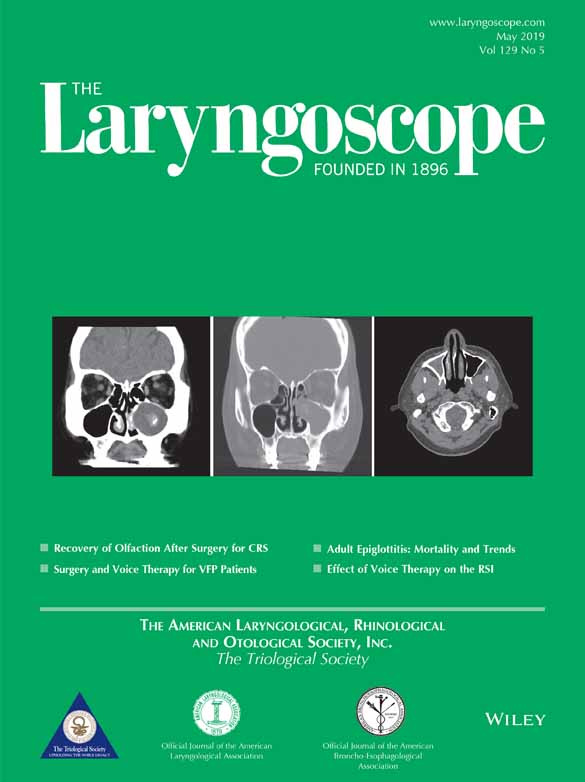General Otolaryngology
Regarding epistaxis in the setting of antithrombotic therapy: A comparison between factor Xa inhibitors, warfarin, and antiplatelet agents
Kham Ali,
Kham Ali
St. John's Riverside Hospital, Department of Emergency Medicine, Yonkers, New York, U.S.A.
Search for more papers by this author Josh J. Wang,
Josh J. Wang
New York University School of Medicine, Ronald O. Perelman Department of Emergency Medicine, Division of Medical Toxicology, New York, New York, U.S.A.
Search for more papers by this author
Kham Ali,
Kham Ali
St. John's Riverside Hospital, Department of Emergency Medicine, Yonkers, New York, U.S.A.
Search for more papers by this author Josh J. Wang,
Josh J. Wang
New York University School of Medicine, Ronald O. Perelman Department of Emergency Medicine, Division of Medical Toxicology, New York, New York, U.S.A.
Search for more papers by this author
First published: 06 February 2019
No abstract is available for this article.
BIBLIOGRAPHY
- 1Glikson E, Chavkin U, Madgar O, et al. Epistaxis in the setting of antithrombotic therapy: a comparison between factor Xa inhibitors, warfarin, and antiplatelet agents. Laryngoscope 2019; 129: 119–123.
- 2Manesh RP, Kenneth WM, Jyotsna G, et al. Rivaroxaban versus Warfarin in nonvalvular atrial fibrillation. N Engl J Med 2011; 365: 883–891.
- 3Mueck W, Stampfuss J, Kubitza D, Becka M. Clinical pharmacokinetic and pharmacodynamic profile of rivaroxaban. Clin Pharmacokinet 2013; 53: 1–16.
- 4Frost CE, Song Y, Shenker A, et al. Effects of age and sex on the single-dose pharmacokinetics and pharmacodynamics of apixaban. Clin Pharmacokinet 2015; 54: 651–662.
- 5Thomas AM, Caroline FS, Sharon JN, Gershon F, Mark LL. Apixaban pharmacokinetics at steady state in hemodialysis patients. J Am Soc Nephrol 2017; 28: 2241–2248.




